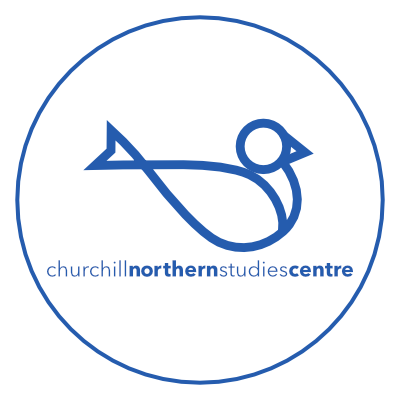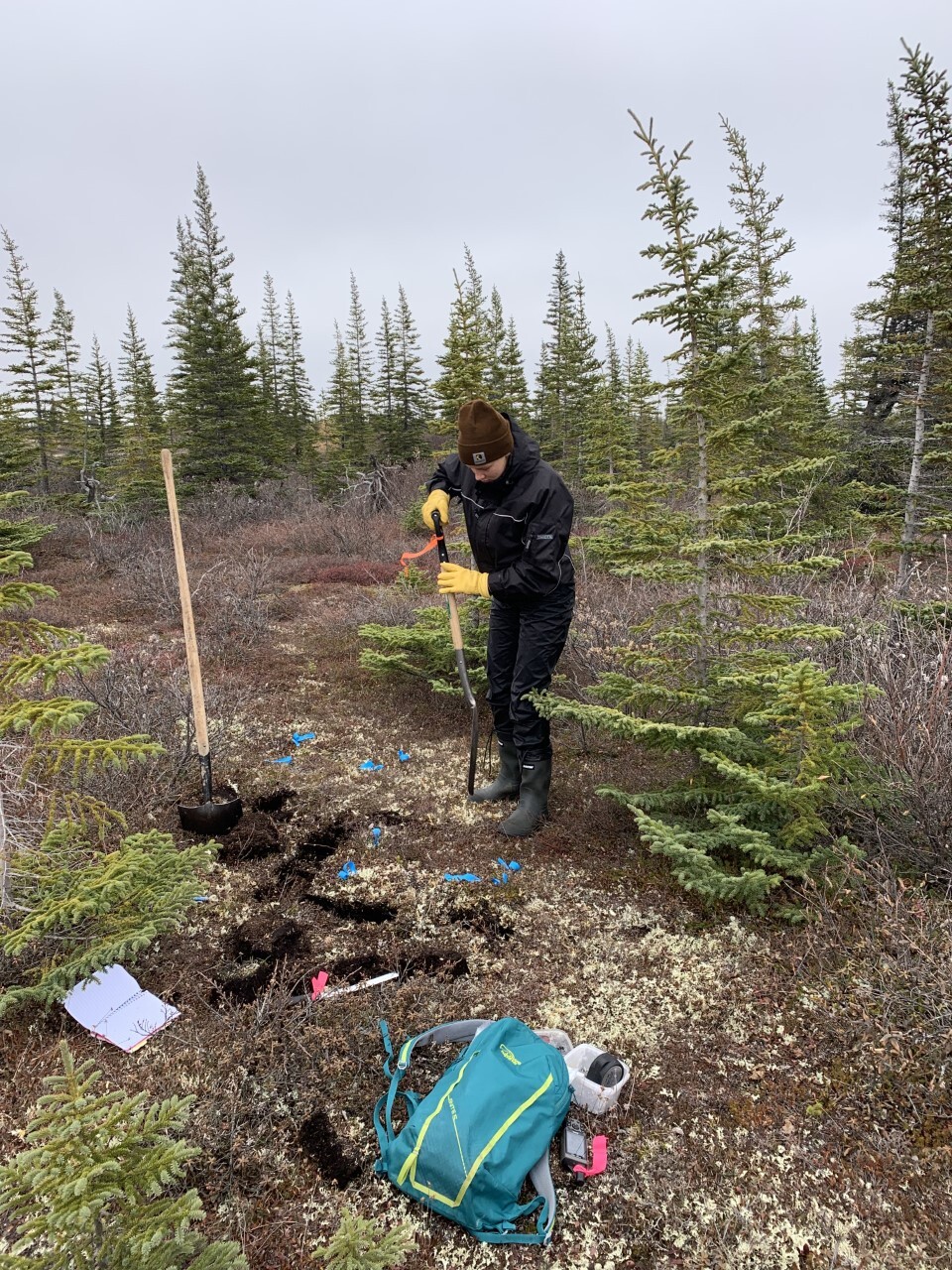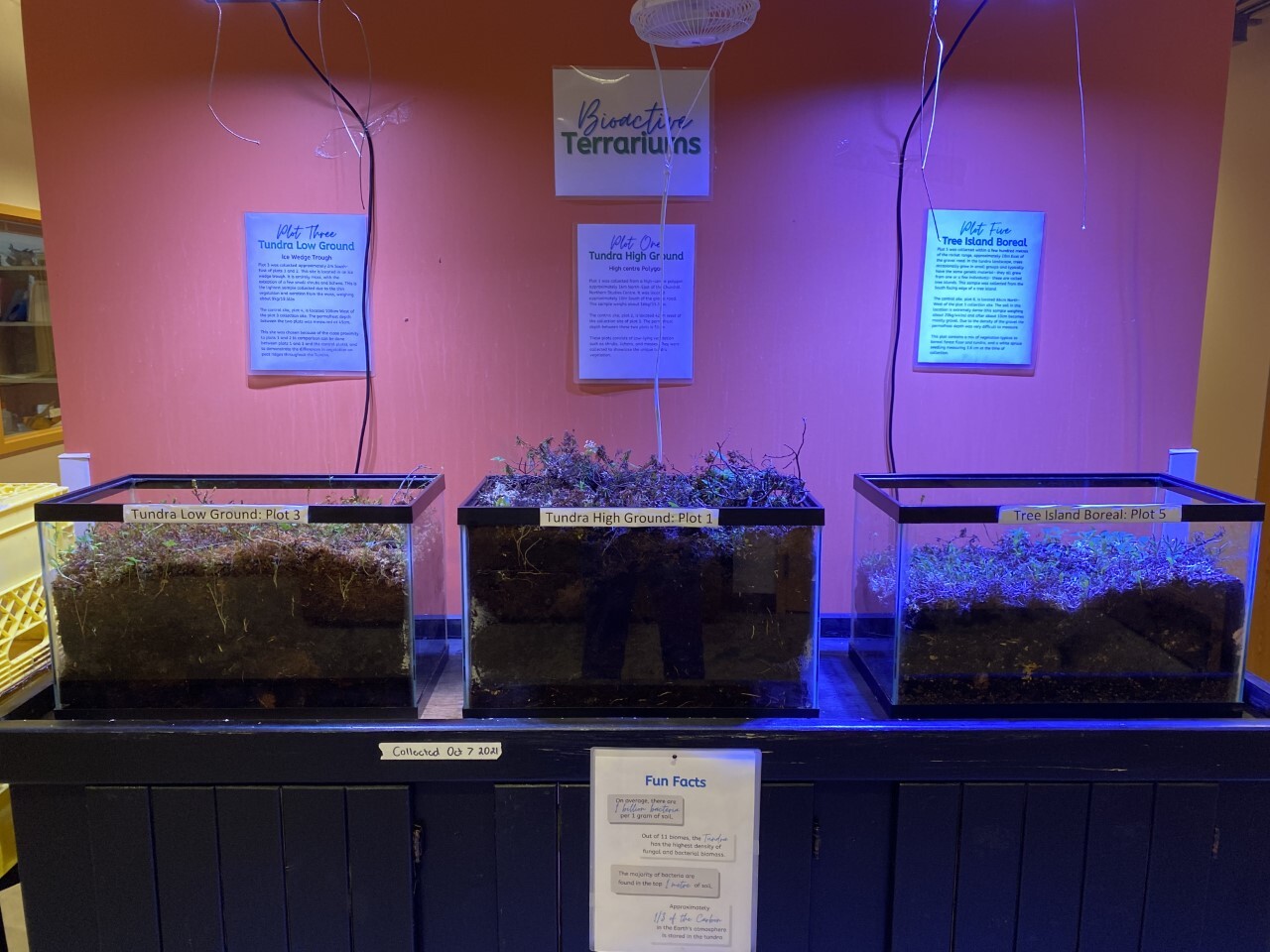BY KATE MAZUR, Seasonal Research Technician.
The newest addition in the Churchill Northern Studies Centre’s science department features three bioactive terrariums. These terrariums provide guests and staff with a refreshing glimpse of summer, creating a real life visual of vegetation not normally accessible in the winter months.
The soil samples were collected by the science team, under 1.5 km away from the CNSC. A corresponding control plot was created for each plot of soil gathered, making for a total of six soil plots around the CNSC. These plots were collected to produce a visual comparison of the wide variety of vegetation in the area.
As you may already know, there are three biomes which intersect in the Churchill area: Tundra, Marine, and Boreal.

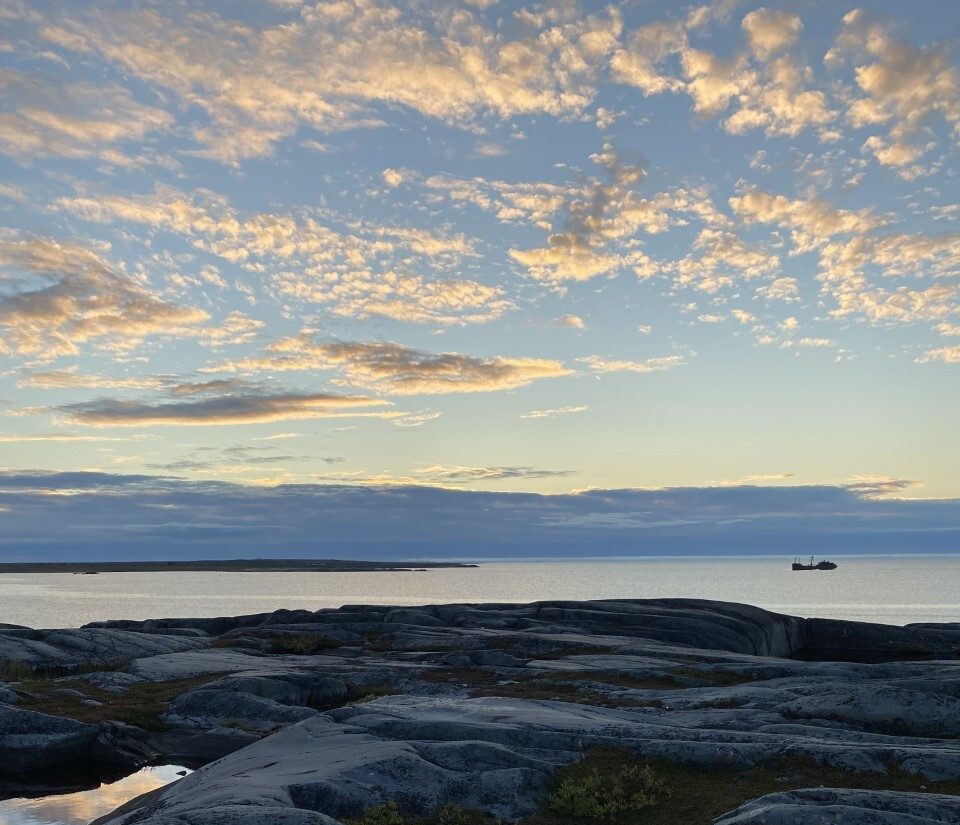
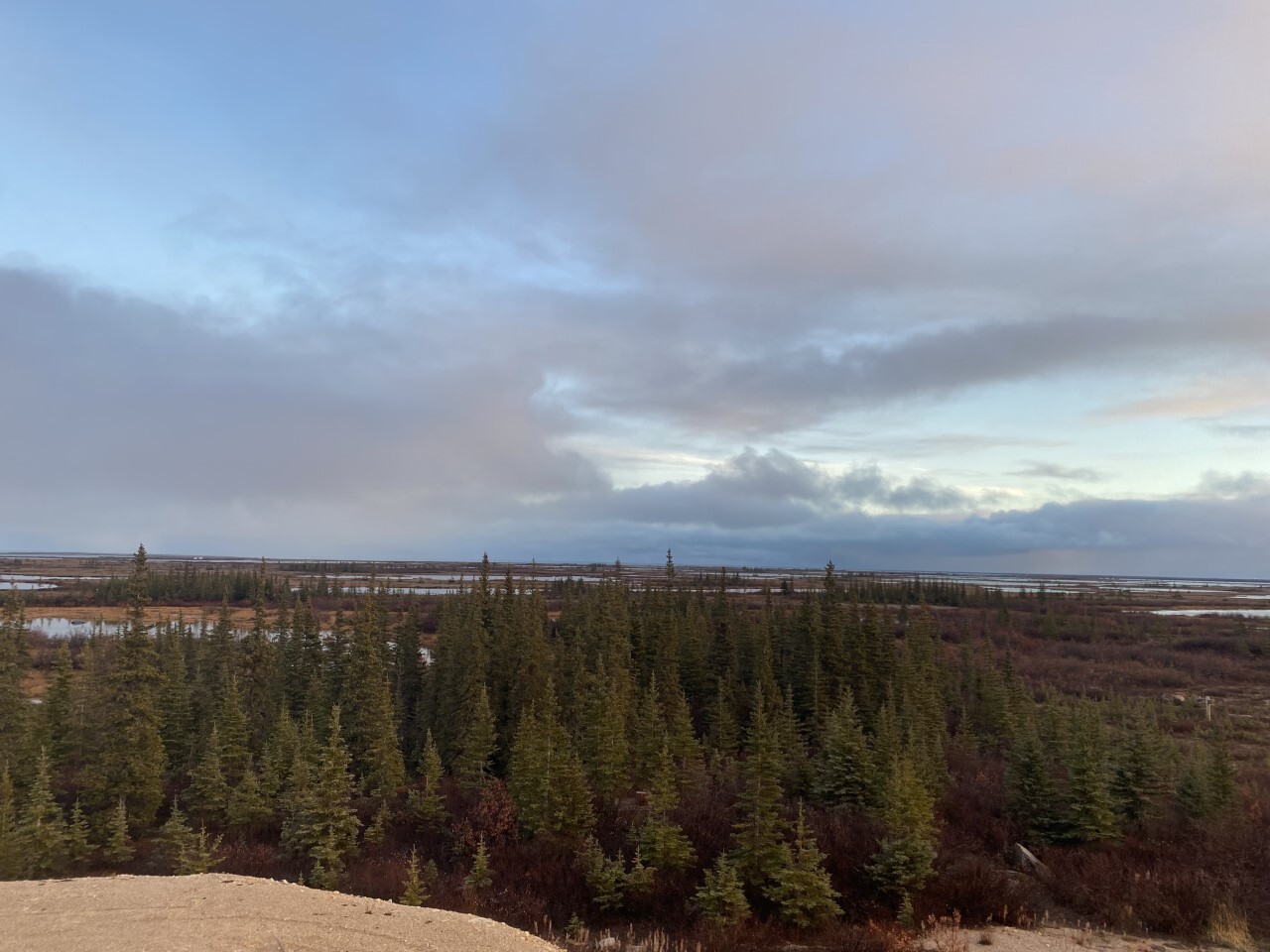
(Pictured left to right: Tundra, Marine, and Boreal biomes)
This makes Churchill a very unique destination for tourists and researchers alike. The idea of collecting a plot for each biome was pondered, however vegetation and soil best representative of the coastal/marine biome would be difficult to access (bear safety playing a factor), and the tundra vegetation can be so diverse, so the idea of a marine plot was scratched. It was decided to collect a boreal plot and two different tundra plots, to show the interesting variety of vegetation that exists in the area.
The science team headed out, armed with shovels, kitchen knives, and Rubbermaid tubs, to collect the soil and vegetation. Plot one was collected from a high centre polygon.
High centre polygon refers to the top of a polygonal shaped ridge on the Tundra. From an aerial view, the Tundra appears to have these polygon shapes drawn on the landscape, like the cracking of soil during a drought (but on a larger scale). These form when water pools in an area under the soil and then freezes, pushing the ground up and creating these polygon shaped ridges.
Plot three was collected from an ice wedge trough just two metres from the first plot. Ice wedge trough refers to the edges of the polygon ridges where the ground is low, and trough-like. This plot is primarily made up of moss, showing the possibilities of extreme differences in vegetation.
Plot five was collected on the edge of a boreal tree island. Tree island describes small groups of trees growing sporadically throughout the sub-arctic. These are typically of the same genetic material. We discovered that the soil in this particular area becomes densely packed gravel after about 25cm. A small white spruce seedling was intentionally included in both plots five and six out of interest. The vegetation of the boreal plot is different than that of the other plots and shows a difference in soil quality.
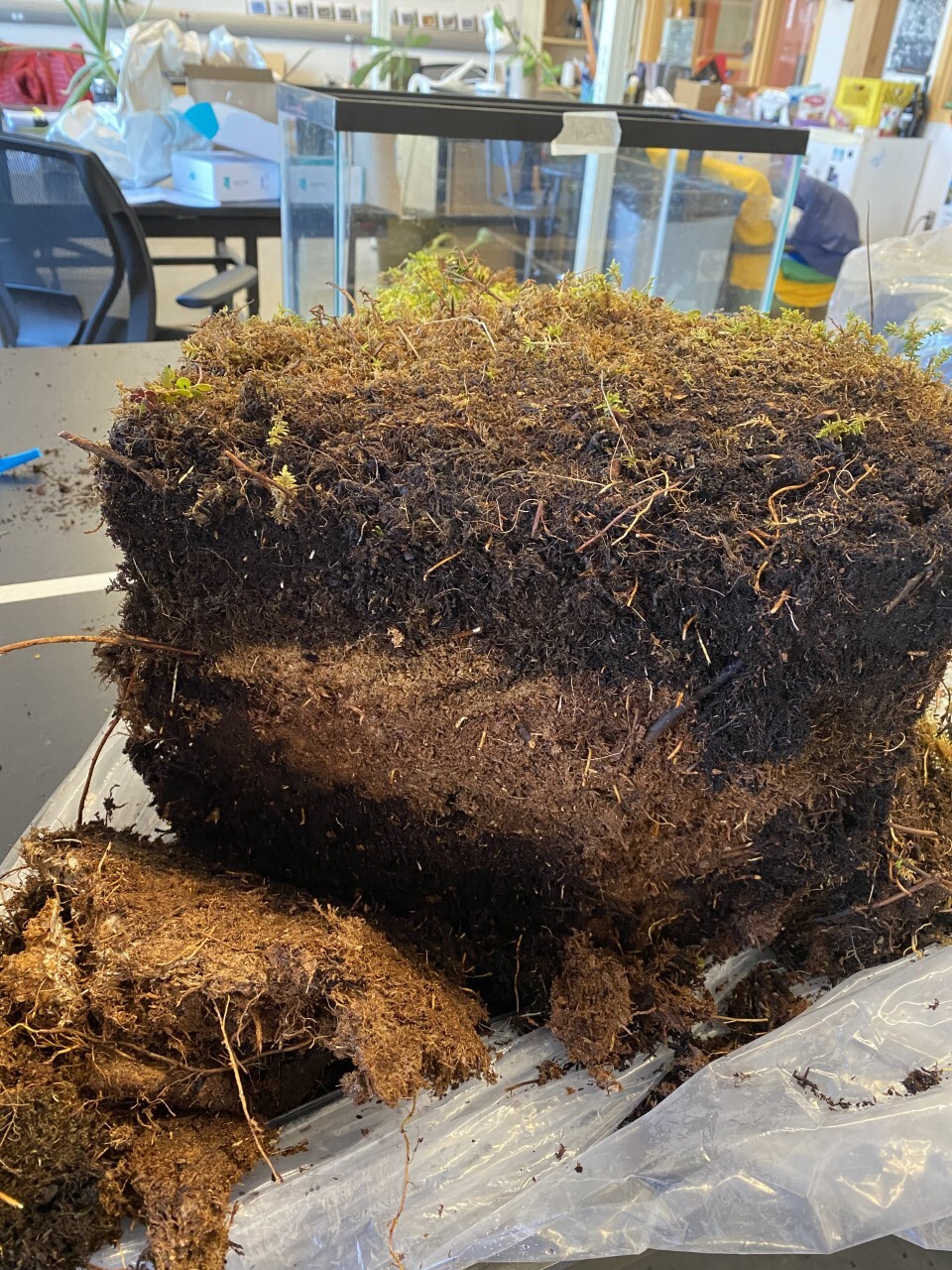

New growth was seen within a week of collection, continuing with an abundance of new vegetation and blooming flowers within the last month. We are very excited to watch the progress of these terrariums as they continue to grow.
Ingham E. (2009). Soil Biology Primer. United States Department of Agriculture, pp. 11. Retrieved on 10/29/2021. From: https://mccc.msu.edu/wp-content/uploads/2016/10/OH_2016_Role-of-soil-bacteria_Update-and-revision-May12_2016.pdf
Merriam-Wesbter (n.d). Bioactive. Merriam Webster. Retrieved on 10/29/2021.From: https://www.merriam-webster.com/dictionary/bioactive
He, L., Mazza Rodrigues, JL, Soudzilovskaia, NA, Barceló, M., Olsson, PA, Song, C., et al. (2020). Global biogeography of fungal and bacterial biomass carbon in topsoil. UC Davis. Report #: 108024. Retrieved on 10/29/2021. From https://escholarship.org/uc/item/1mm4s4x3
